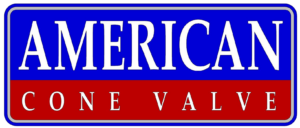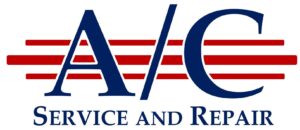Custom machining services play a vital role in various industries, offering unparalleled precision, superior quality, and the flexibility to meet unique specifications. Whether a project requires intricate designs, tight tolerances, or durable materials, custom machining provides a tailored solution that off-the-shelf parts simply cannot match. From aerospace to water and wastewater applications, businesses that invest in custom machining services benefit from greater efficiency, longevity, and cost-effectiveness in their operations.
Why Custom Machining Is Essential for Specialized Parts
Many industries rely on specialized components that are not readily available on the market. Custom machining allows businesses to create parts that meet exact specifications, ensuring proper fit and functionality in critical applications. For instance, in water treatment facilities, precise valve components are necessary for optimal flow control and system efficiency. Off-the-shelf solutions may not provide the required durability, leading to potential failures and costly downtime.
With custom machining, manufacturers can create unique components for:
- Complex machinery and equipment
- Prototyping new designs
- Repair and refurbishment of aging systems
- Enhancing the performance of existing equipment
By working with an experienced custom machining provider, businesses can obtain parts that are tailored to their specific needs, reducing inefficiencies and improving overall system reliability.
Key Industries That Benefit from Custom Machining Services
Custom machining services are critical across numerous industries, including:
- Water and Wastewater Treatment – Facilities require custom components such as butterfly and cone valve parts to maintain effective fluid control.
- Aerospace and Defense – Precision machining ensures compliance with strict safety and performance standards.
- Automotive and Transportation – Custom parts enhance vehicle performance and longevity.
- Medical and Healthcare – Specialized components are necessary for medical devices and surgical instruments.
- Oil and Gas – Durable, high-performance parts are crucial for equipment in harsh environments.
Each industry depends on the reliability and precision of custom-machined parts to maintain smooth operations and ensure safety.
The Advantages of Precision and Flexibility in Machining
One of the most significant advantages of custom machining services is the level of precision they offer. High-quality CNC (Computer Numerical Control) machines can produce components with tolerances as tight as a few microns. This level of accuracy is critical in applications where even the slightest deviation can result in malfunction or system failure.
Choosing the Right Materials for Custom Machining Projects
Selecting the right material for a custom machining project is crucial for ensuring durability and performance. Some of the most commonly used materials include:
- Metals: Stainless steel, aluminum, titanium, and brass are frequently used for their strength and resistance to corrosion.
- Plastics: High-performance polymers like PEEK and UHMW are chosen for applications requiring lightweight yet durable components.
- Composites: Carbon fiber and other reinforced materials provide superior strength while remaining lightweight.
Each material has distinct properties that affect machining processes, such as hardness, heat resistance, and wear resistance. Consulting with a professional machining service provider ensures the best material choice for any given application.
How Custom Machining Ensures Quality Control
Custom machining providers implement stringent quality control measures to maintain consistency and reliability. These measures include:
- Computer-Aided Design (CAD) and Simulation – Ensuring designs are optimized before production.
- Precision CNC Machining – Using advanced machinery for high accuracy.
- Strict Inspection Processes – Employing coordinate measuring machines (CMM) and other tools to verify dimensions.
- Material Testing – Conducting stress tests to confirm durability and performance.
By maintaining high-quality standards, custom machining providers help prevent defects and ensure long-lasting components that meet industry regulations.
How Custom Machining Can Save You Time and Money
While custom machining may seem like a costly investment upfront, it ultimately leads to significant savings in the long run. Here’s how:
- Reduced Downtime: Custom-machined parts provide exact replacements for worn-out components, reducing operational disruptions.
- Lower Maintenance Costs: High-quality, precisely machined components last longer and require less frequent replacement.
- Enhanced Efficiency: Parts designed to fit perfectly lead to better system performance and energy savings.
- Scalability: Custom machining allows for batch production, helping businesses scale their manufacturing needs efficiently.
Partnering with a Reliable Custom Machining Provider
Choosing the right custom machining provider is essential for ensuring quality, precision, and timely delivery. When selecting a machining service, consider:
- Experience and expertise in relevant industries
- Advanced CNC technology and machining capabilities
- Quality control processes and certifications
- Ability to handle custom projects with specific material requirements
Experience the Precision of Custom Machining with A/C Service and Repair
When it comes to high-quality custom machining services, A/C Service and Repair stands as a leader in the industry. Specializing in the repair and refurbishment of cone, butterfly, and gate valves, we provide top-tier machining solutions tailored to the water and wastewater sectors. Our expertise in manufacturing replacement parts and complete replacement valves ensures that our customers receive durable and precise components that enhance their operations.
If you need expertly machined parts for your equipment, contact us today. Let our team help you find the perfect machining solution, ensuring precision, quality, and flexibility in every component.


